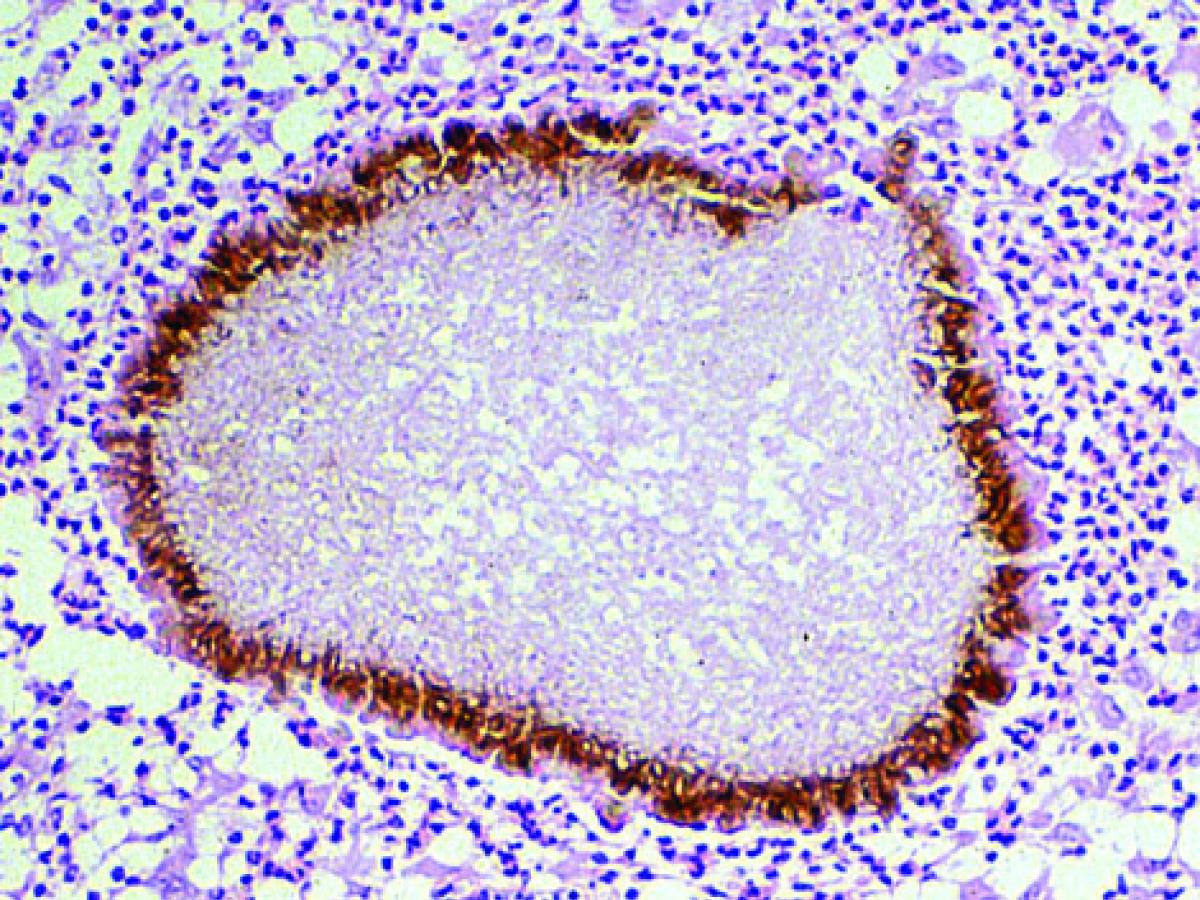Trematosphaeria grisea
Trematosphaeria grisea (formerly Madurella grisea) is a soil fungus and is a known causative agent of mycetoma (de Hoog et al., 2004a, 2012; Desnos-Ollivier et al., 2006).
RG-2 organism.

Trematosphaeria grisea showing a typical “black grain” in a haematoxylin and eosin-stained tissue section.
Morphological description: Colonies are slow growing, dark, leathery, folded with radial grooves and with a light brown to greyish surface mycelium. With age, colonies become dark brown to reddish-brown and have a brownish-black reverse. Microscopically, cultures are sterile, although hyphae of two widths have been described, thin at 1-3 µm in width or broad at 3-5 µm in width. The optimum temperature for growth of T. griseais 30oC; this fungus does not grow at 37oC.
Histopathology: Grains of Trematosphaeria grisea (tissue microcolonies) are black, round to lobed, soft to firm, up to 1.0 mm, with two distinctive zones, a hyaline to weakly pigmented central zone and a deeply pigmented periphery.
Trematosphaeria grisea can be distinguished from Madurella mycetomatis by its inability to grow at 37oC, and its ability to assimilate sucrose but not lactose.
Key features: Black grain mycetoma, no growth at 37oC, no diffusible brown pigment produced on culture and absence of conidia.
References: Chandler et al. (1980); Kwon-Chung and Bennett (1992); Ahmed et al. (2014b); Tanaka et al.(2015); Suetrong et al. (2011).
